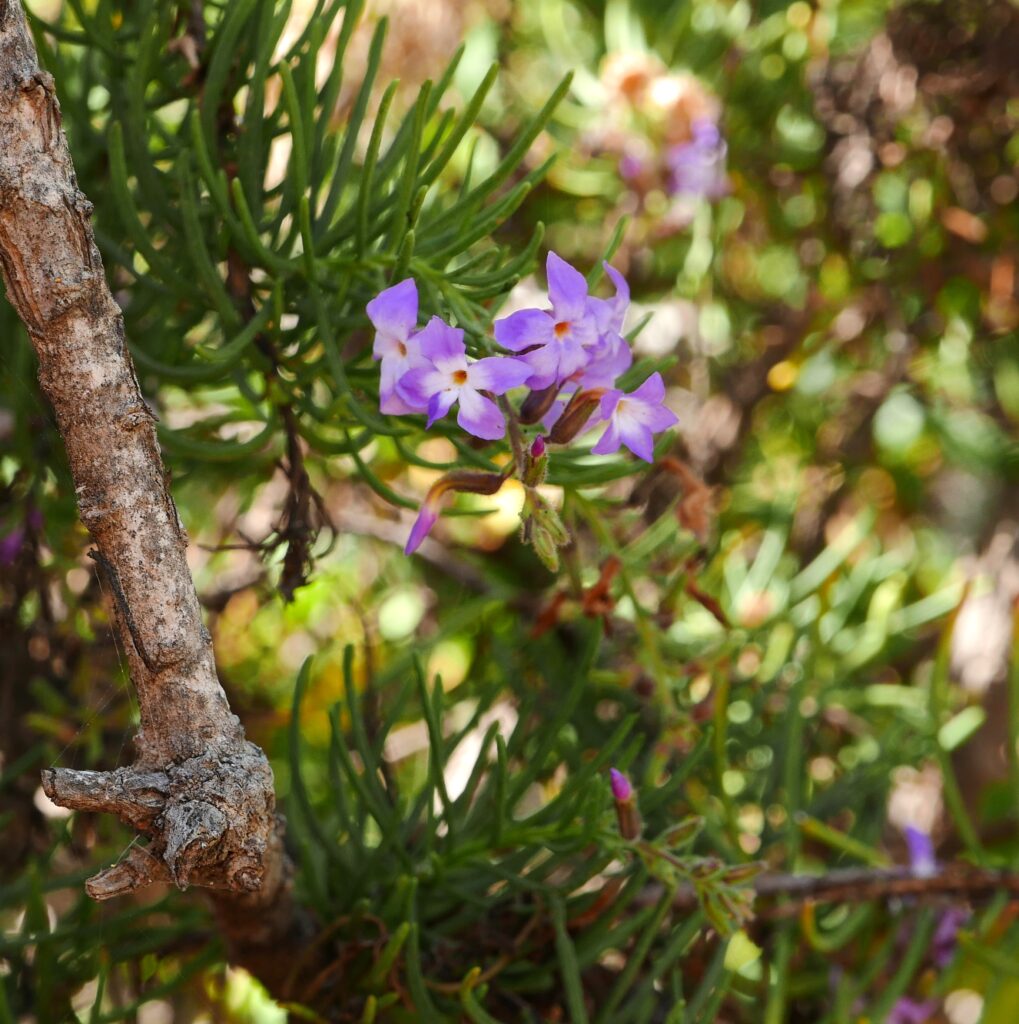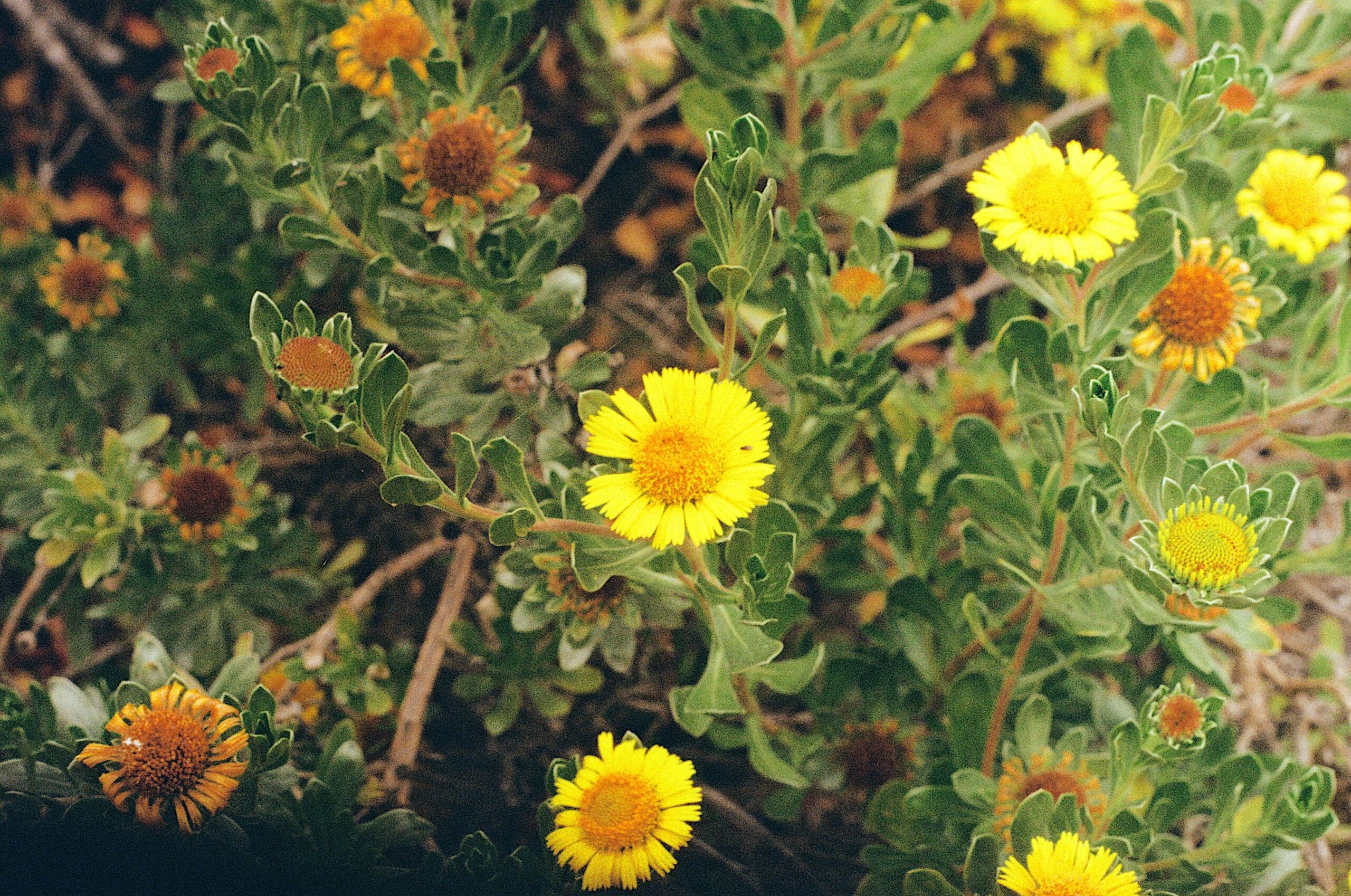Endemic? Native? Exotic?
Endemic species occur only in one specific geographic region, and are not found anywhere else, with their native range restricted to that place. Native species occur naturally in a region – without human intervention – and are considered indigenous to their original area, but may be found in other locations around the world. Both are well adapted to the unique conditions of their habitat. Exotic species have been introduced to a region, usually by humans, and often adapt in ways that are not always favourable for endemic or native species. Sometimes an exotic species may become ‘naturalised’, which means that it has become established in this new environment and can reproduce and sustain its population without human intervention.
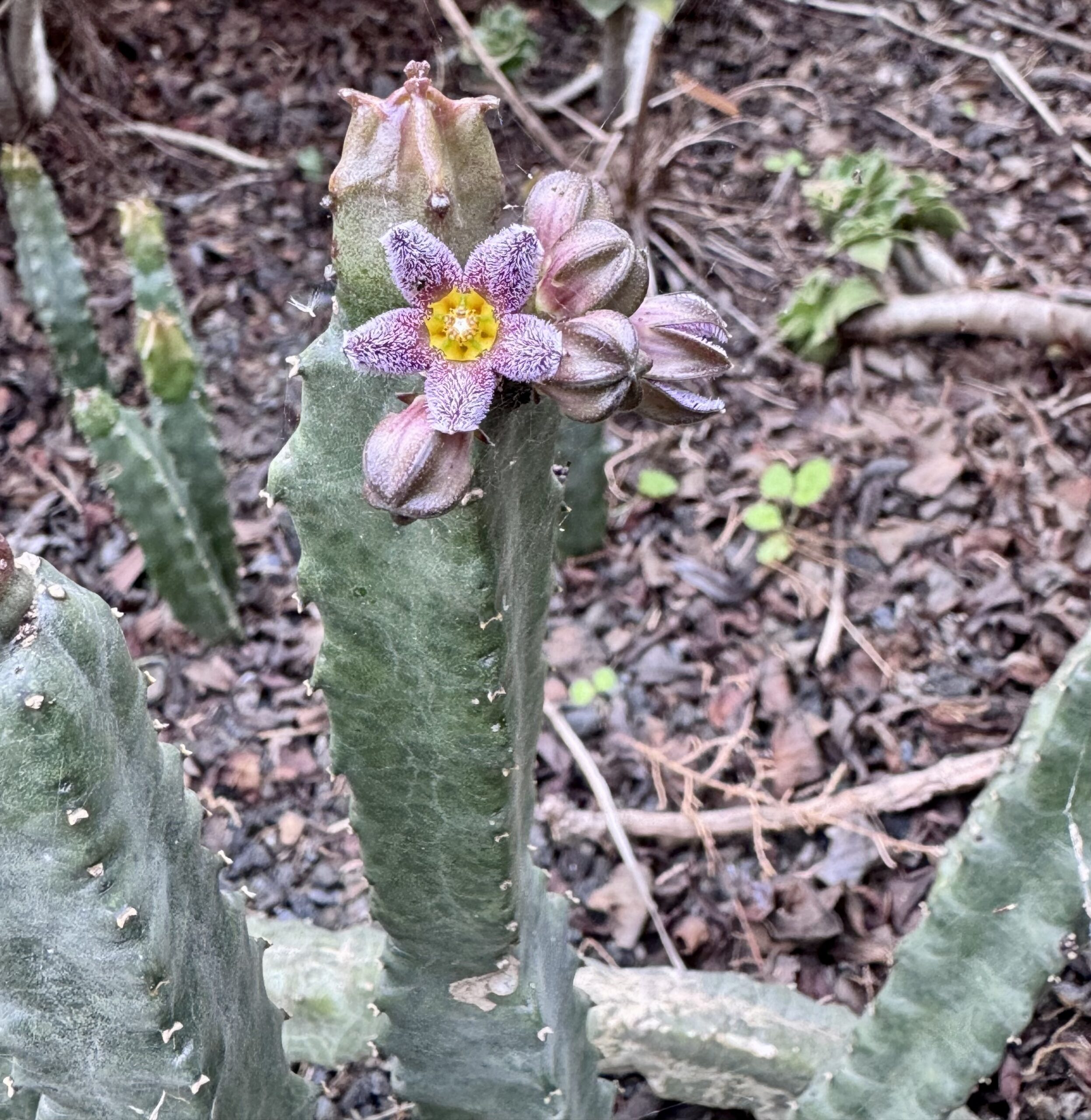
People associate Lanzarote with cacti, as it thrives here in abundance due to the high aridity of the climate, but cacti only come from the Americas. The cacti-form succulent species of the Canaries and Africa, though externally often similar, are genetically very different. One distinction that can be quickly made is that a true cacti produces clear sap, while a plant like Euphorbia Canariensis has a milky sap. In some euphorbia species this milky sap is very toxic, but had uses such as latex production. For example, the sap from Tabaiba dulce was used to make chewing gum during the last century.
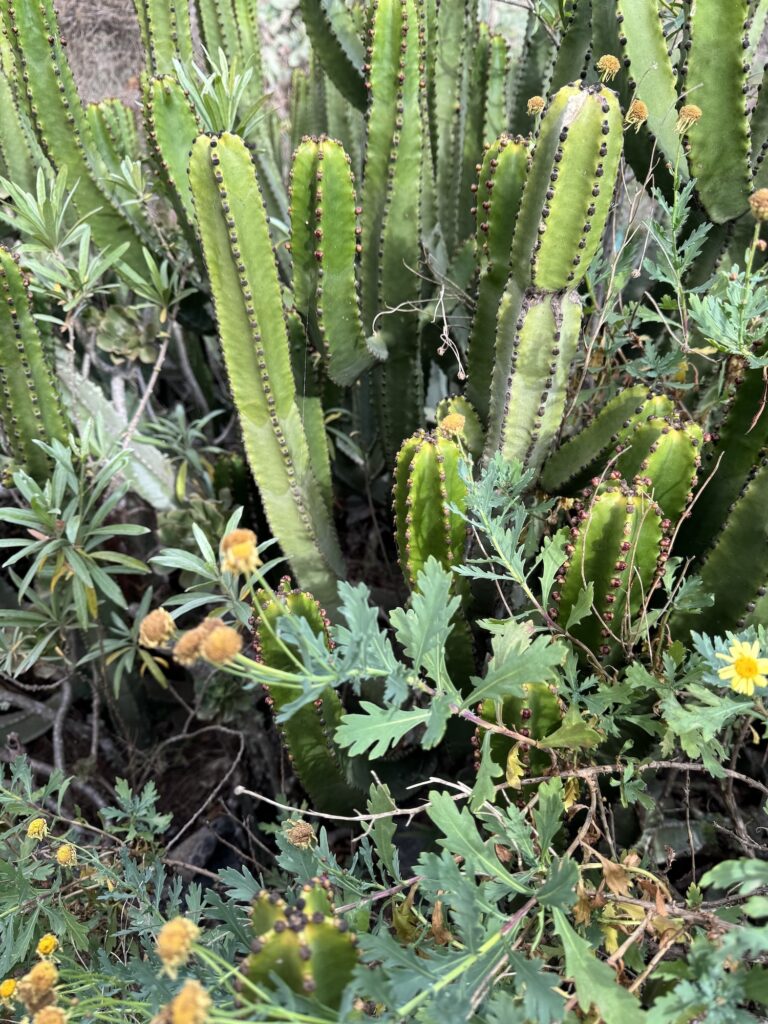
Haría has been inhabited for thousands of years. Before the Spanish colonised Lanzarote in the 14th Century, the indigenous folk (known as the Majos) survived years of low or zero rain by their ‘Palmeral’ agroforestry system – the lovely Canarian palm is deep rooted enough to grow even in the driest years, feeding the fronds to their goats produced milk and meat. The 4 mature palms at the far end of the garden are part of an ancient palmeral. More recently people here developed the ‘picon’ system – the black volcanic cinders you see covering most fields here are added to eliminate evaporation, storing rainwater in the underlying clay soil for many months (see harialanzarote.com/stone-mulching ). I feel huge admiration for the ways people here have coped with adversity, I’m not sure if my appreciation is reciprocated, most of my neighbours don’t like trees – they take up water that could be used to grow potatoes! For centuries life here has been a struggle, aridity and wind combine to make cultivation very difficult, because of this there is little local interest in growing anything you can’t eat.
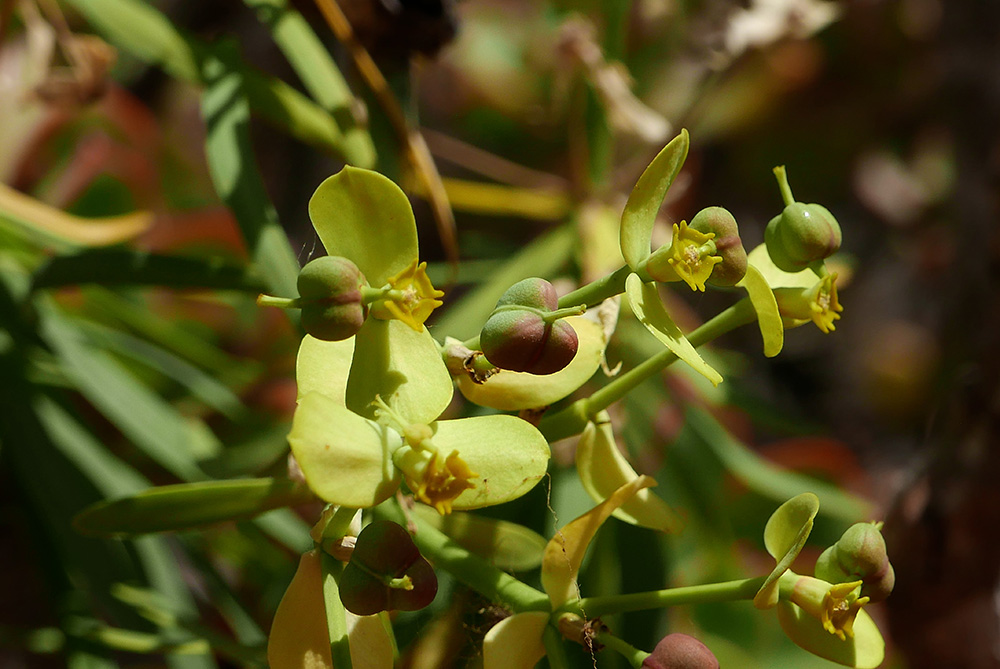
Over the years I have noticed how our flowering plants seem to take turns in producing blossoms, presumably to ensure that there is always something to keep the pollinators alive.
Aeonium species
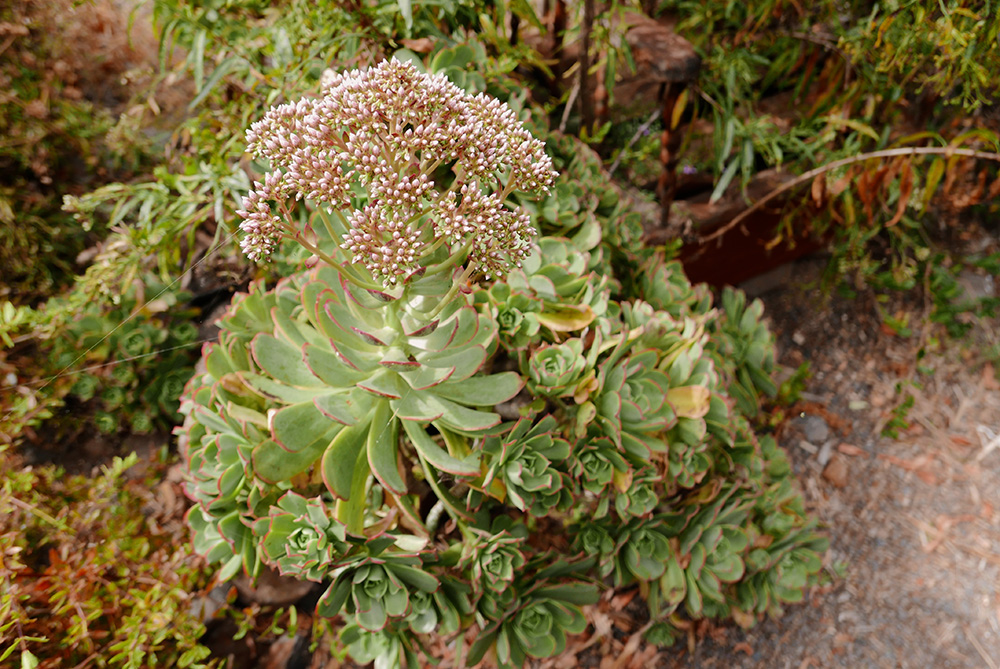

Limonium
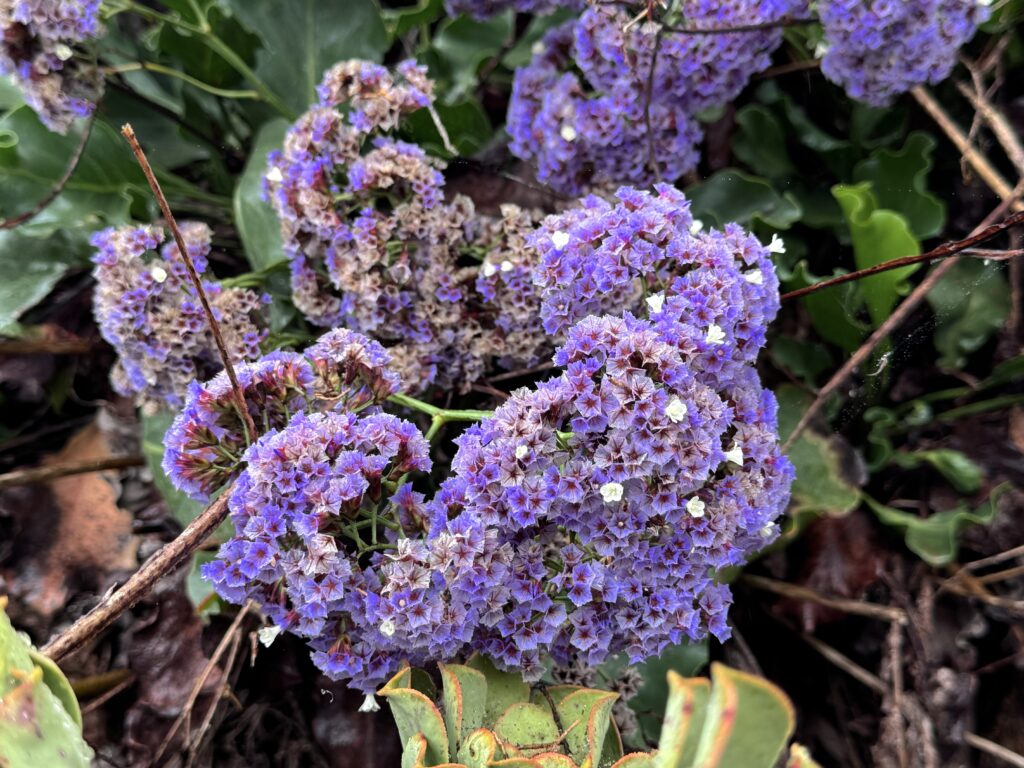
Sonchus
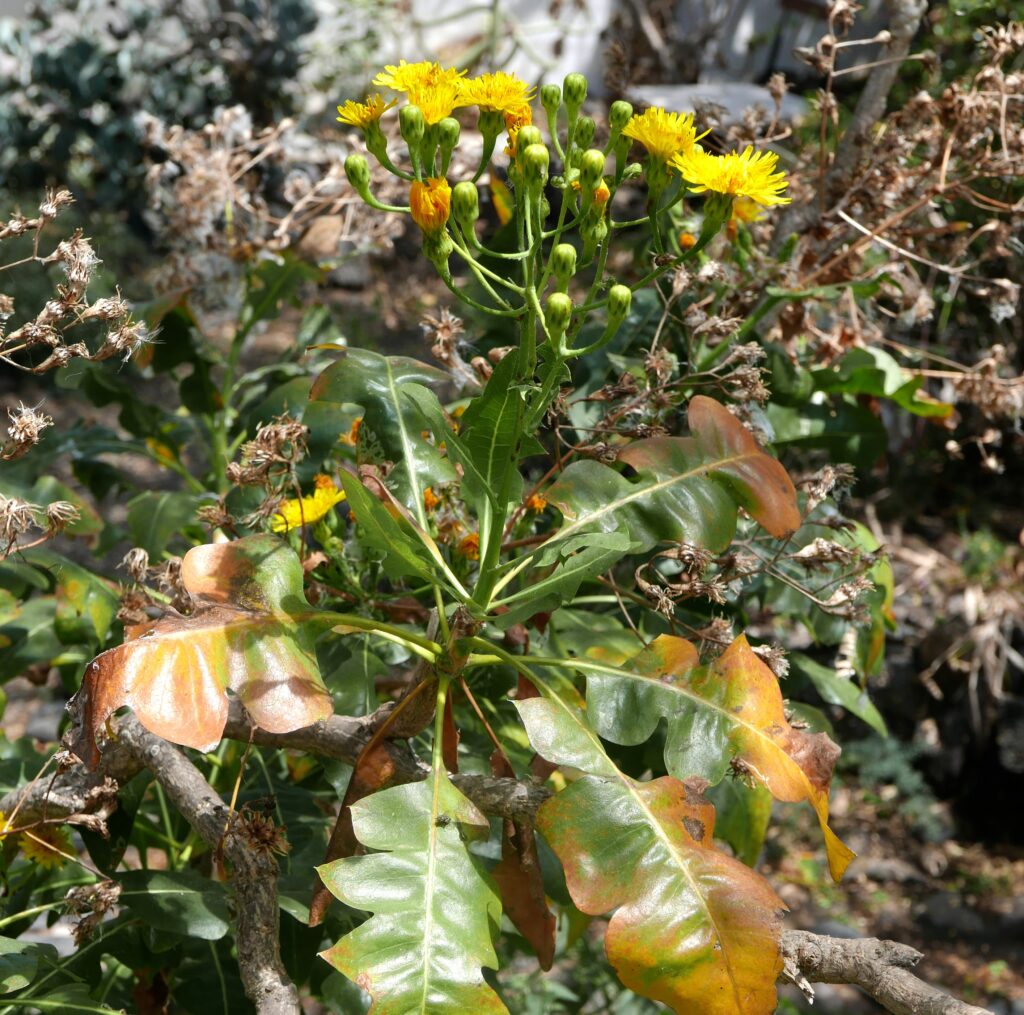

Asparagus
Conditions here might well favour the co-evolution of plants which flower at different times, so that the pollinating insects get a steady supply of food – it certainly seems that there is always something flowering in the garden; when the Aeonium blooms start to fade these attractive white flowers appear. Two native species of the asparagus family are present in the garden. Asparagus nesiotes (below) is very well established. Asparagus arborescens, though less delicate in appearance, doesn’t seem to grow as vigorously.
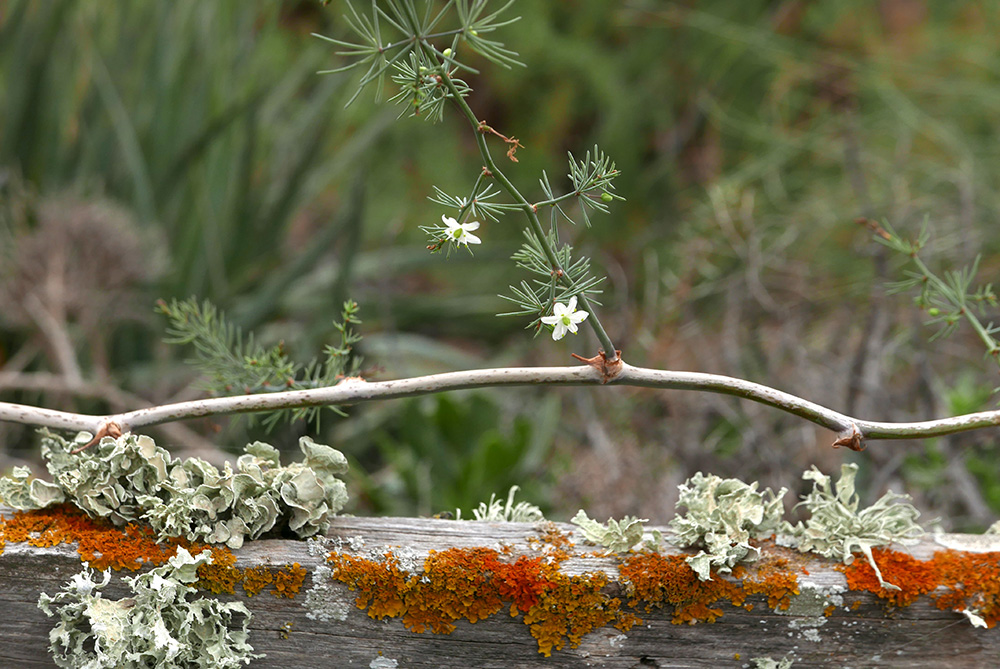
Asteriscus
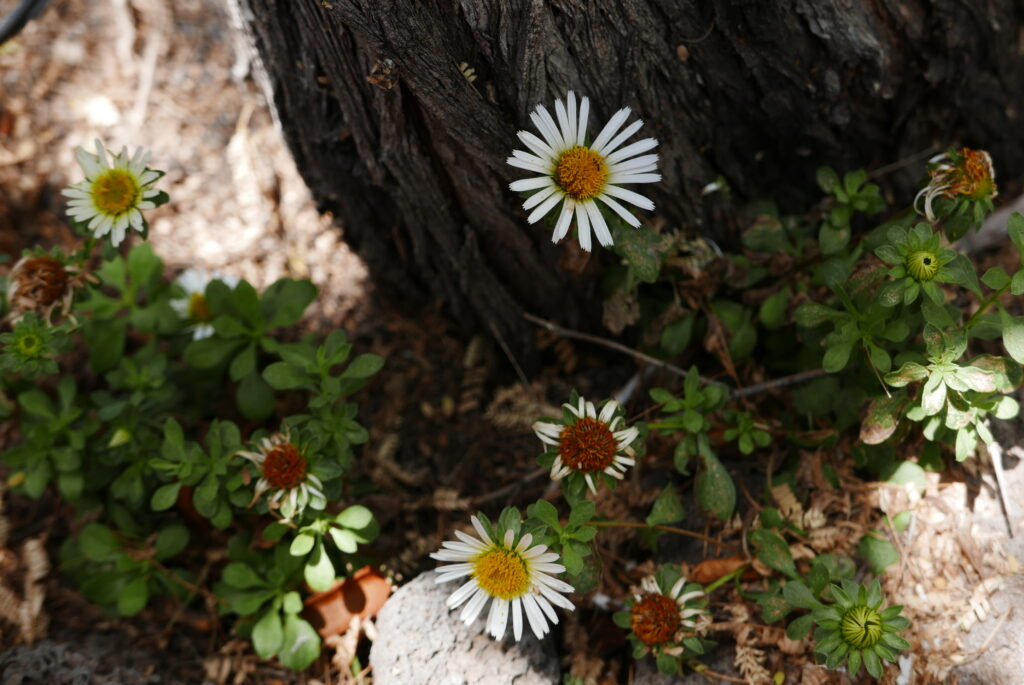
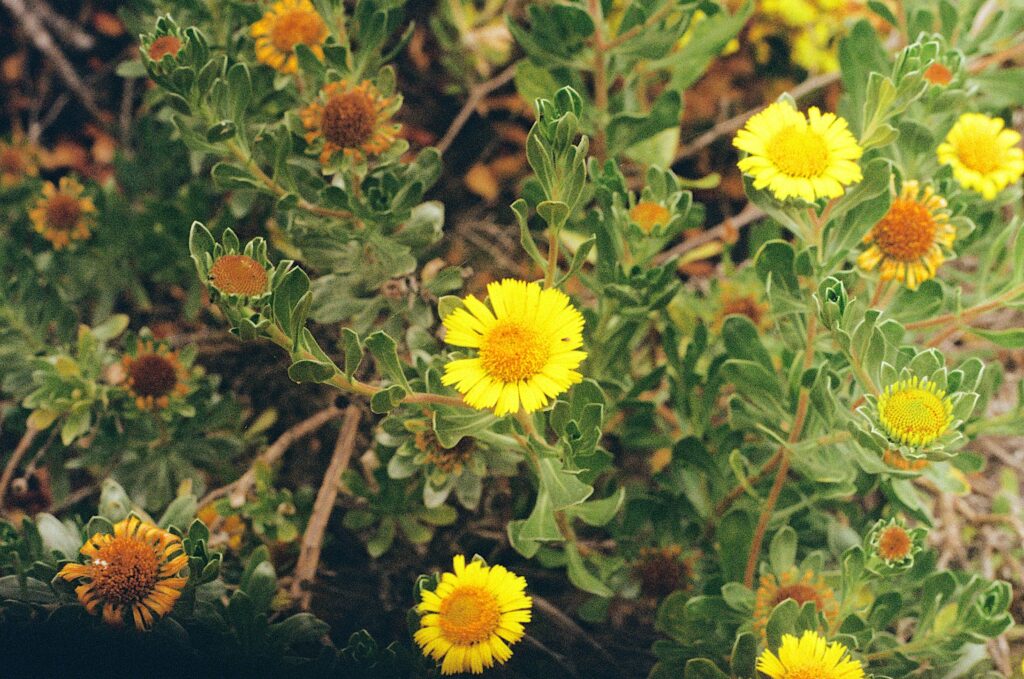
Convolvulus
Bindweed, the gardener’s enemy, has evolved into some unique Canarian species. Relatively recently discovered on the Risco de Famara in Haría is the rare purple-flowered creeper Convolvulus lopezsocasi (red-list protected) pictured below. This flourishes in several parts of the garden. Although much less rare (endemic to the Canary Islands), Convolvulus floridus makes an equally stunning impact in the garden. This species forms a shrub growing up to 3 metres high.

Echium
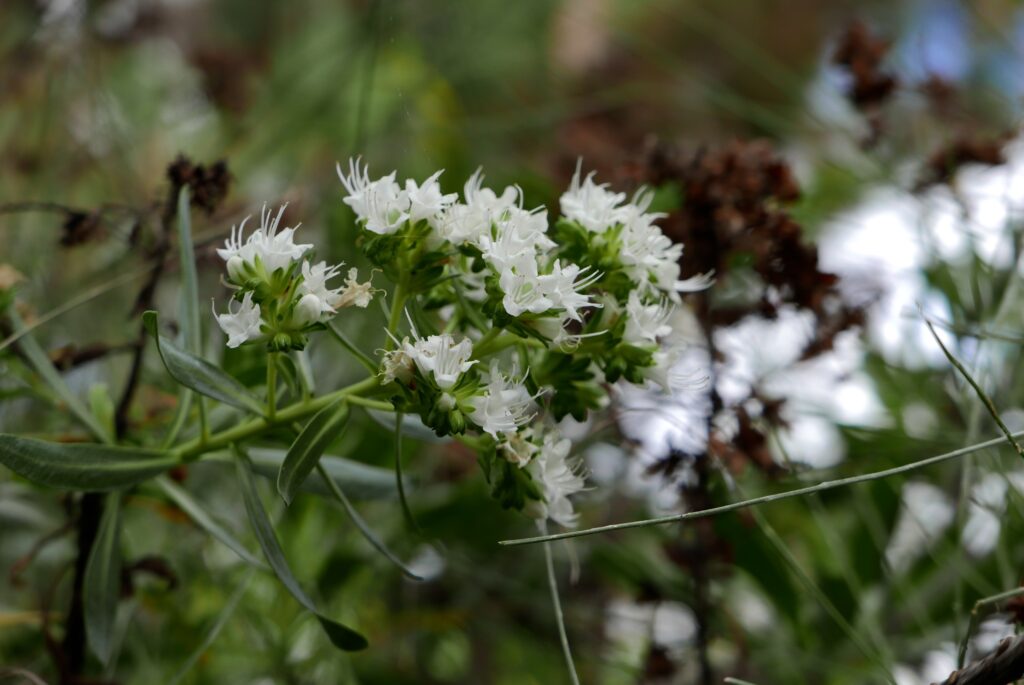
Lavandula

Caralluma burchardii

Campylanthus salsoloides Roth
